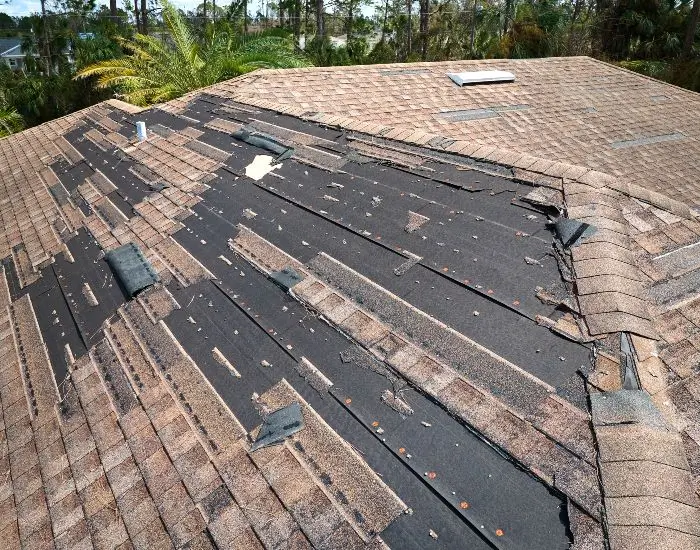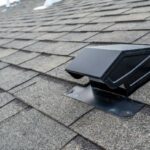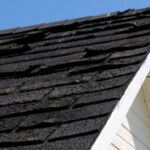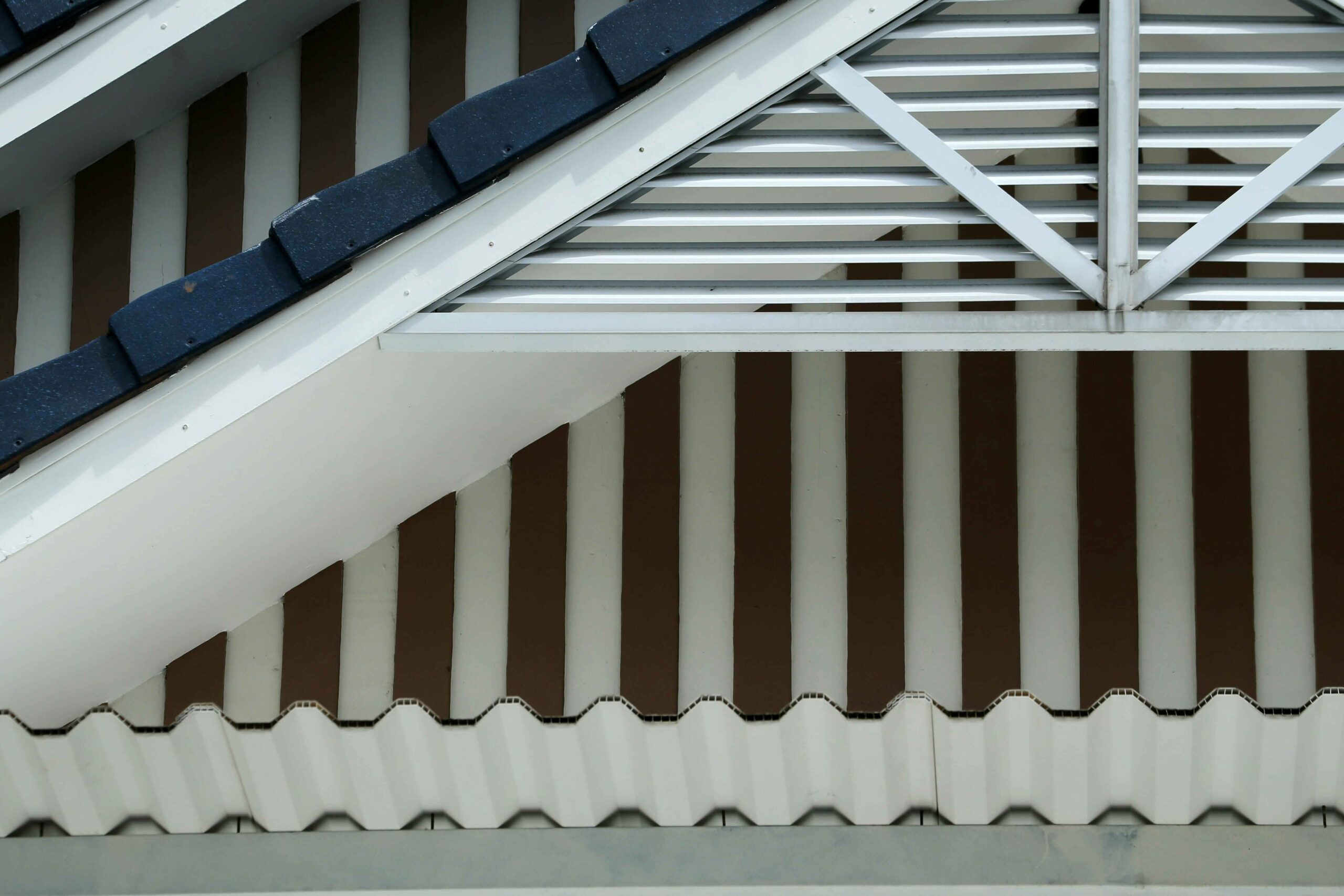How to Tell If Your Roof Has Storm Damage
March 15, 2024 | By Mike Gonet | Filed under: Blog, Roofing

Roof damage is a common issue Southern New England homeowners face, especially after a storm. Strong winds, hail, and heavy rain can all cause significant damage to your roof, compromising its structural integrity and causing potential leaks. As a homeowner, it’s essential to know how to tell if your roof has storm damage and what steps to take. Whether you live in Massachusetts, Connecticut, New Hampshire, or Rhode Island, Classic Metal Roofs would be happy to advise if you need a storm damage roof replacement. Reach out to us to request an inspection, or keep reading to learn more.
Most Common Types of Storm Damage to Your Roof
Being proactive and knowledgeable about handling roof storm damage can save you time, money, and stress in the long run. Your home is your biggest investment, so it’s important to take care of it by properly maintaining your roof. If your neighborhood has seen a strong storm pass through, you must go outside and evaluate any potential damage to your roof. Rain roof damage is quite common, leading to leaks and moisture build-up, not to mention mold growth and rot. Strong winds often lead to missing flashing and roofing shingles, leaving your roof vulnerable to leaks. Hail also presents a significant risk to your roof’s structural integrity. Hail damage often goes undetected to the homeowner’s naked eye, but the holes and dings created by hail can lead to much bigger issues.
How to Check for Roof Damage After a Storm
The first step in handling storm damage to your roof is identifying it. If you notice any of these signs of damage after a storm, it’s best to consult a professional to inspect your roof for further damage:
- Missing or Damaged Shingles – Strong winds can rip off shingles from your roof, leaving behind patches of missing or torn shingles. Hail can also cause dents and cracks in your roofing shingles, making them less effective in protecting your roof from the elements.
- Leaks & Water Stains – Check your attic and ceilings for any signs of leaks or water stains after a heavy rainstorm. These can indicate your roof has been compromised and is allowing water to seep into your home.
- Debris on Your Roof – If you notice branches, leaves, or other debris on your roof after a storm, inspecting it for potential damage is important. Debris can cause scratches and punctures in shingles, leading to further issues if not addressed.
- Soffit, Fascia, & Gutter Damage – Your roof’s soffits, fascias, gutters, and flashings can all take a beating during a storm. Check for loose or clogged gutters, flashings that have shifted out of place, dents, cracks, broken seals, and other signs of damage.
- Chimney Damage – High winds can cause damage to your chimney, including cracked bricks or a tilted chimney cap. Damage to your chimney can affect the stability of your entire roof and should be addressed immediately.
- Ice Dam Formation – Winter storms can also wreak havoc on your roofing, especially when ice dams form. Ice dams occur when snow melts and refreezes at the roof’s edges, eaves, and gutters, creating a barrier that can cause water to back up under the shingles. If you notice icicles forming on your roof’s eaves or gutters, it could be an indication of ice dam formations.
Do You Need a Storm Damage Roof Repair or Replacement?
Do you need a storm damage roof repair or replacement? The extent of the damage to your roof and your specific insurance coverage will help you determine the answer to this question. If only a few shingles are damaged, roofing repairs may be sufficient. However, if a significant portion of your roof has been affected, a storm damage roof replacement may be necessary to ensure your safety. Your insurance adjuster should be able to help you determine the best course of action. Should you need a roof replacement in Southern New England, Classic Metal Roofs would be happy to assist. We offer several financing options and one of the best installation warranties in the business to ensure you receive quality roofing that lasts a lifetime.
Filing Roofing Insurance Claims for Storm Damage
Once you’ve identified storm damage to your roof, filing an insurance claim as soon as possible is crucial. Here are the main steps to remember when filing a roofing insurance claim for storm damage:
- Take Photos – Before making any temporary repairs or adjustments, take photos of the damage to your roof for documentation purposes.
- Contact Your Insurance Company – Call your insurance provider and inform them of the damage to your roof. They will guide you through the next steps and may send an adjuster to your home to inspect the damage in person.
- Get Estimates – While waiting for your insurance adjuster, get multiple estimates from reputable roofing companies. This will help you better understand the extent of the damage and potential roof repair or replacement costs.
- Keep Records – Keep track of all communication with your insurance company and any repair or replacement receipts.
- Be Aware of Deadlines – Most insurance companies have specific deadlines for filing claims, so make sure to submit all necessary documentation within the given time frame.
Request a Roof Inspection to Evaluate Your Roof Storm Damage
Dealing with storm damage of any kind to your roof can be stressful. However, knowing how to handle it can make the process easier. By being aware of signs of damage, filing insurance claims promptly, and working with a reliable roofing company, you can ensure your home is well taken care of in the event of a storm. Being proactive and caring for your roof is your first – and best – line of defense for your home.
A little prevention can go a long way. Remember to inspect your roof regularly for any signs of damage and address them quickly to prevent further issues. When in doubt, consult a professional to assess your roof storm damage. Contact Classic Metal Roofs to request an inspection and estimate in Southern New England. Whether you’re in Massachusetts, Connecticut, New Hampshire, or Rhode Island, our mobile team will come to you in your time of need. We’ve got you covered, literally!





